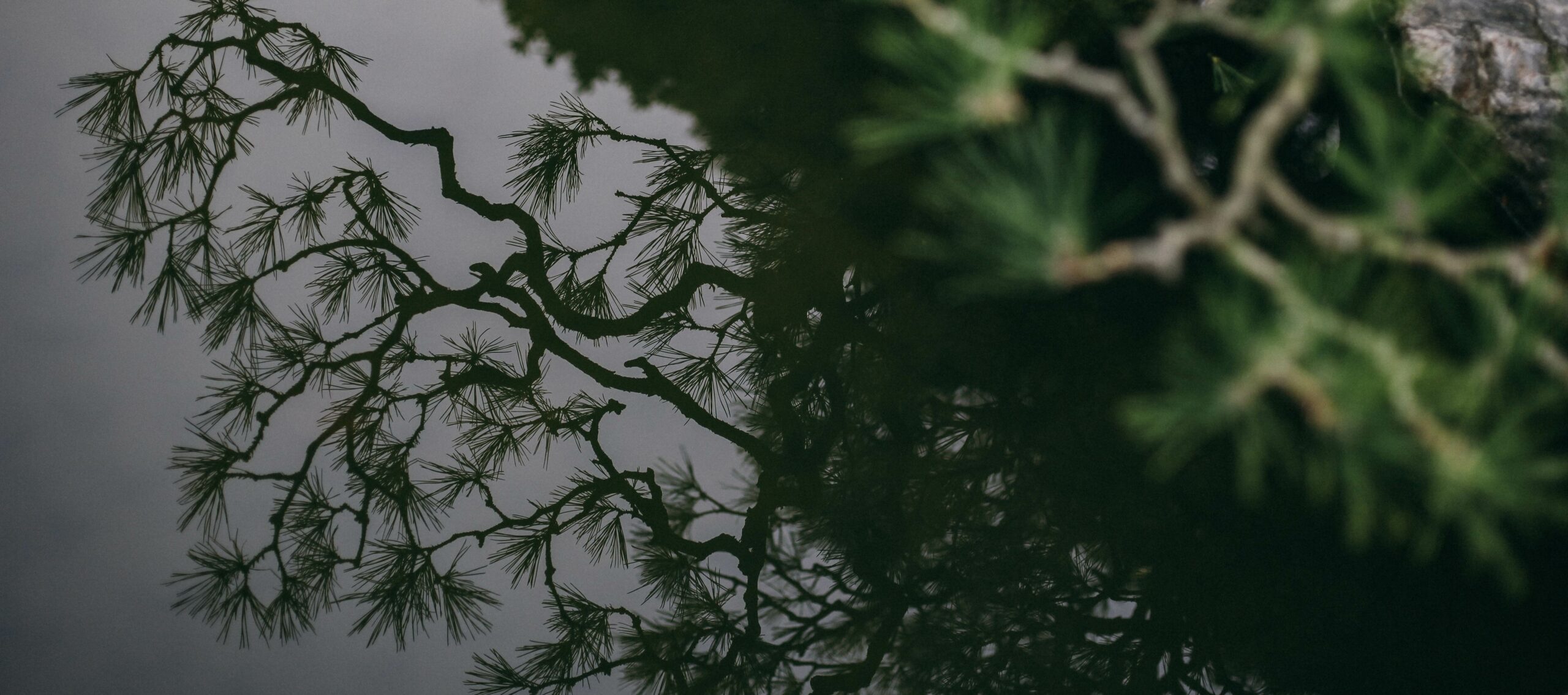Ōhori Park Japanese Garden is hidden away at the southern end of Fukuoka city’s Ōhori Park, a man-made boating lake surrounded by gritty running tracks and woodland greenery. The park is also home to the Fukuoka Art Museum, a hidden treasure trove of both western and international works of art. Ōhori Park’s Japanese garden and the Fukuoka Art Museum are a two-minute walk from each other, and so it makes sense to visit both in either a morning or afternoon trip.
Ōhori makes an ideal second act in this relaxed mini-itinerary, with an adjoining sake shop and ceramics gallery at its exit, and a popular and stylish cafe next to the gallery. The path encircling Ōhori Park’s bean-shaped lake is used by walkers and runners, of whom there are many. You can’t beat watching them sweat as you enjoy iced coffee and egg roll sandwiches, perhaps with a matcha ice cream chaser for good measure. After all, exercise is hard work – especially for those supervising from a distance.
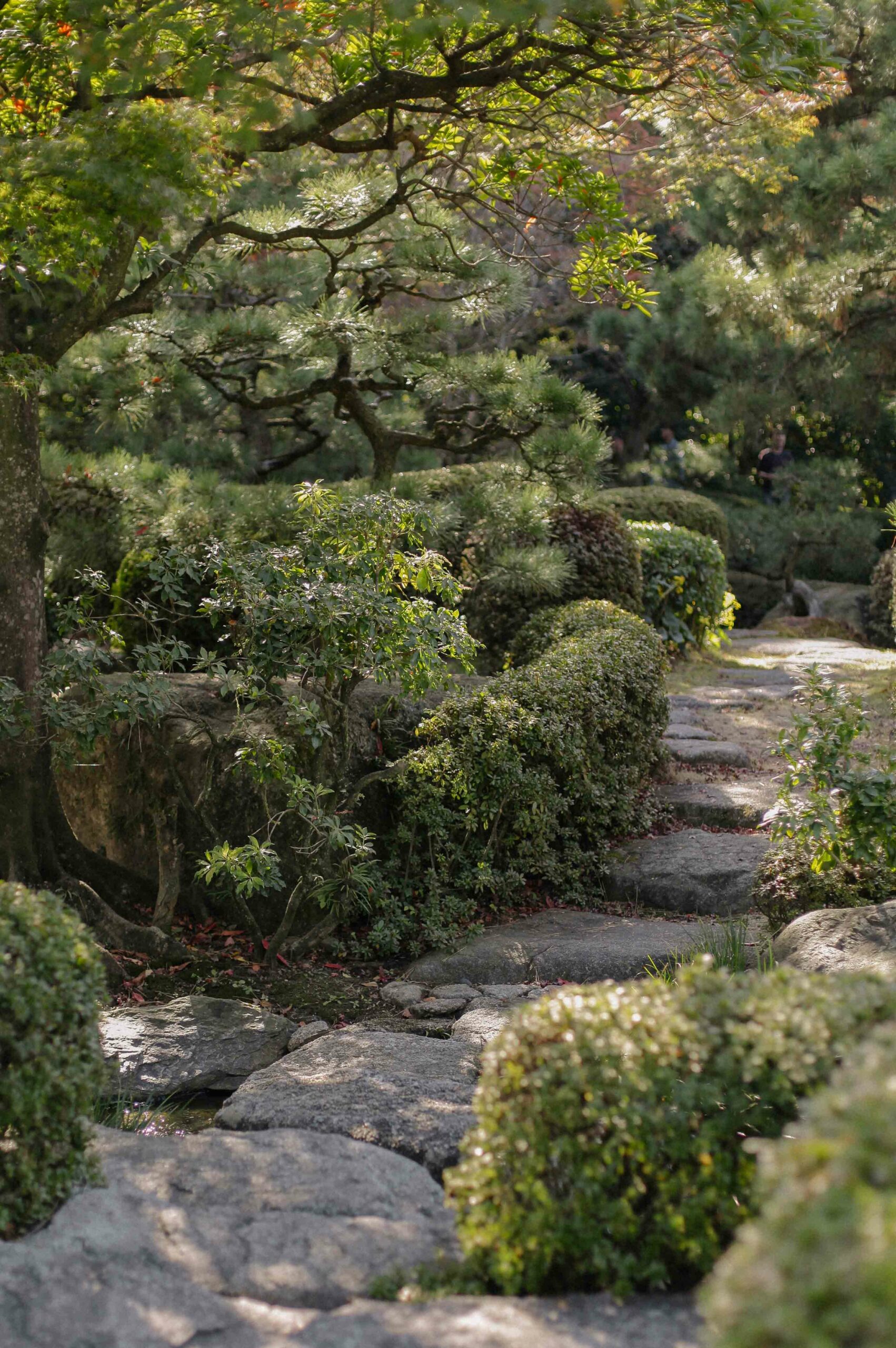
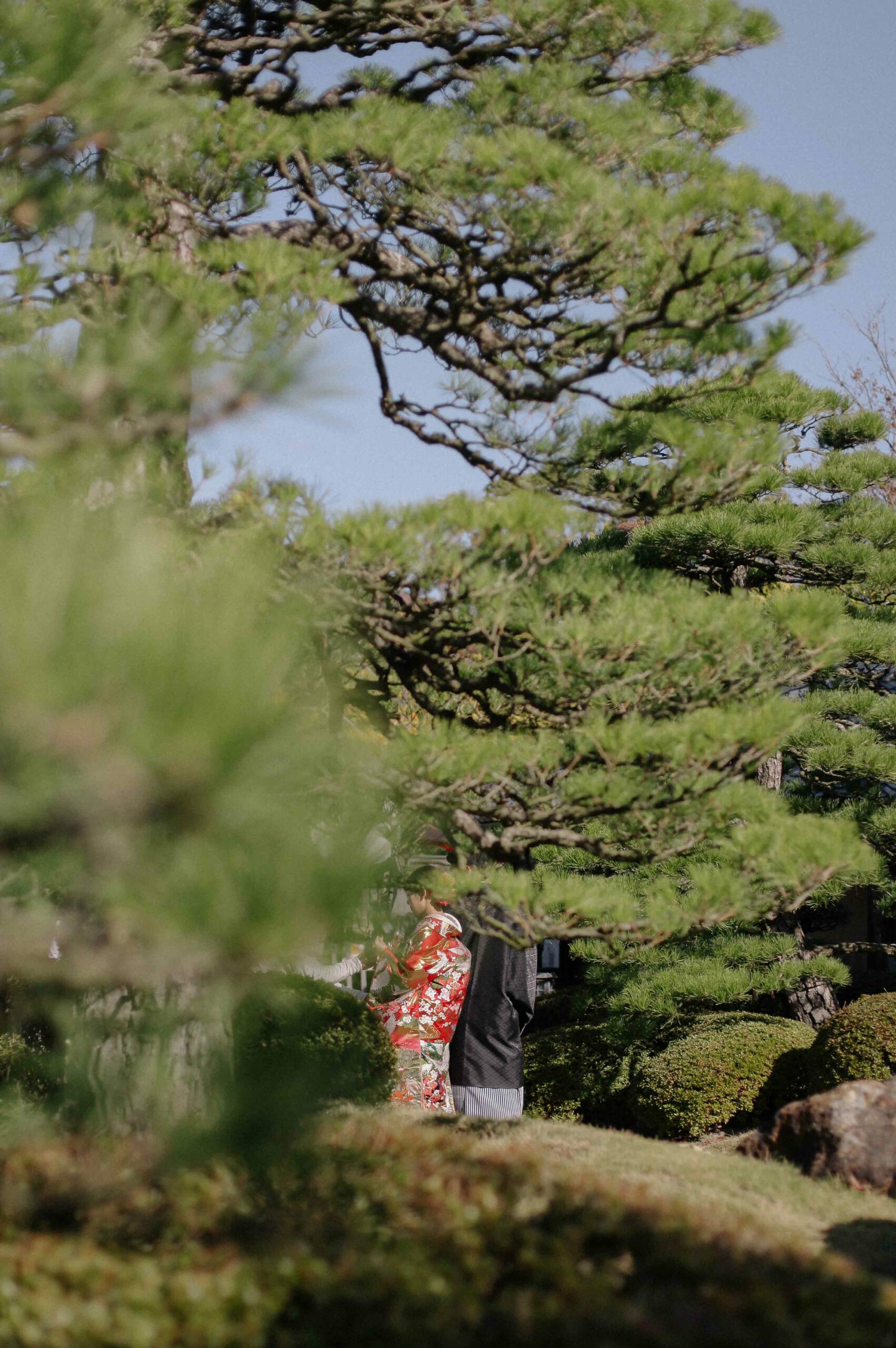
Whether or not visitors have a specific interest in Japanese gardens, the Ōhori Park Japanese garden offers a stunning setting in which to stroll, pause, and breathe. It’s impossible not to be enchanted by the winding stone paths and artfully twisted ornamental pine trees. Garden aficionados will also appreciate Ōhori’s unique combination of planting, stonework, waterscapes and open space.
It’s normally the case that ‘strolling’ gardens hold back from complex planting, favouring open spaces and flowing lines. It’s a design style used in Tokyo’s rolling Hama Rikyu estate, but is a world away from the craggy, mossy interiors of Kyoto’s more intimate gardens. Ōhori, however, has been built on the bare bones of a space that’s landscaped for openness and strolling, but planted for intricacy and intimacy. There is no single viewpoint which allows you to see all of the garden at once, and certain pathways hide visitors among the trees entirely. It’s a varied experience, with tunnels of foliage opening onto sweeping waterscapes.

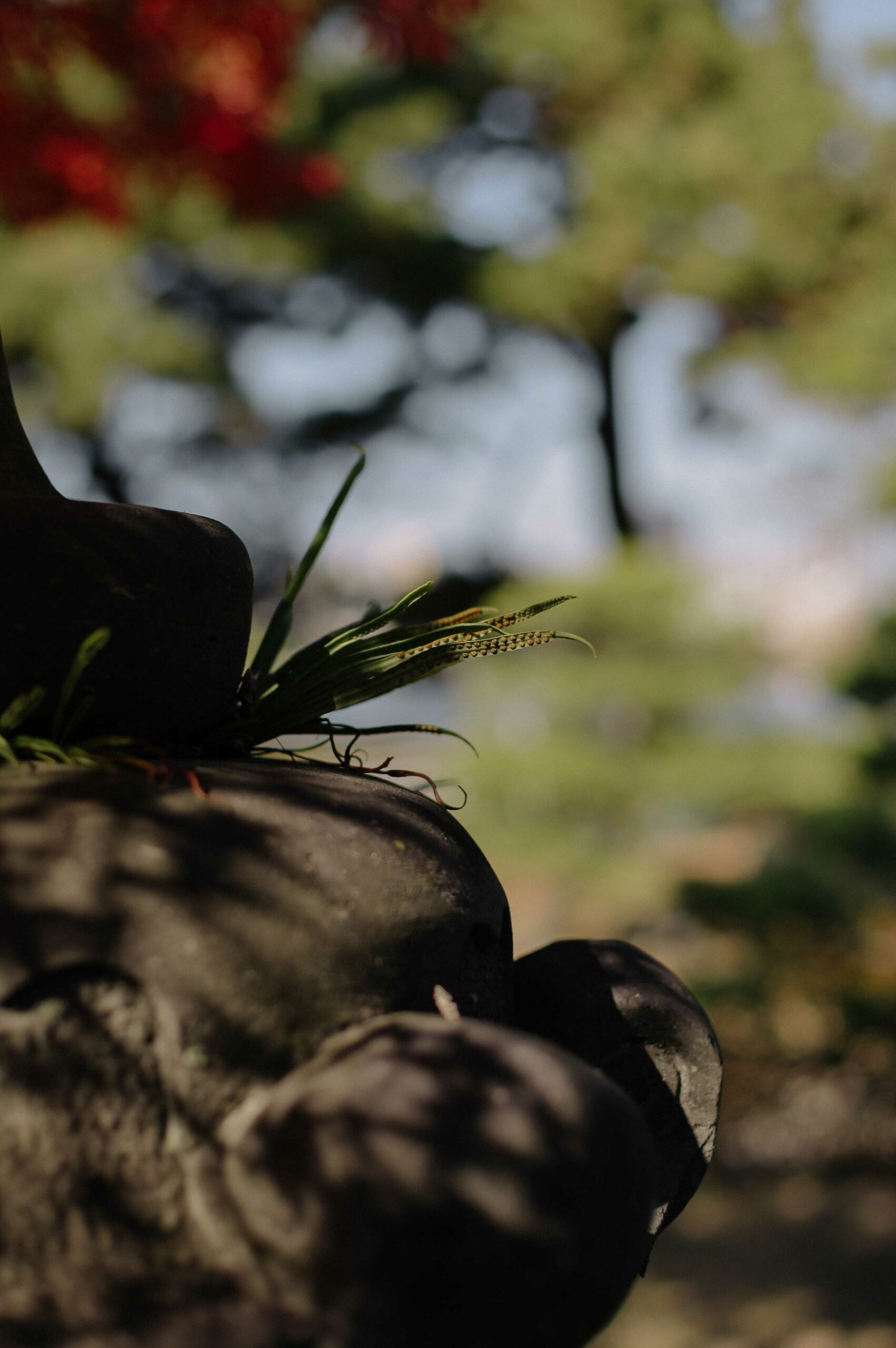
The compact planting of the garden, encircled by traditional white plaster walls, perhaps evokes a sense of ‘Kyoto’ more than ‘Fukuoka.’ Many of the gnarled, angular pines look as though they’ve been there for centuries, but the garden was only completed in 1984. Fukuoka doesn’t have an abundance of traditional Japanese gardens, which makes this creative landscape all the more enjoyable. It’s almost surreal to peer over the tiled tops of the plaster walls and see a modern city perched on the horizon; yet another visual oxymoron so characteristic of Japan.
Ōhori Park’s Japanese garden was designed and created by Nakane Kinsaku, a highly regarded contemporary Japanese garden designer. His other works include Keishu-en, in Takeo, a small onsen city south of Fukuoka. Ōhori, like Keishu-en, blends a winding stroll garden with sculptural designs incorporating stone, still water and water in motion. Nakane’s renowned works include the arresting landscape garden at the Adachi Museum in Japan’s Shimane prefecture, and the Japanese garden at Boston’s Museum of Fine Arts (Massachusetts, U.S.A.).
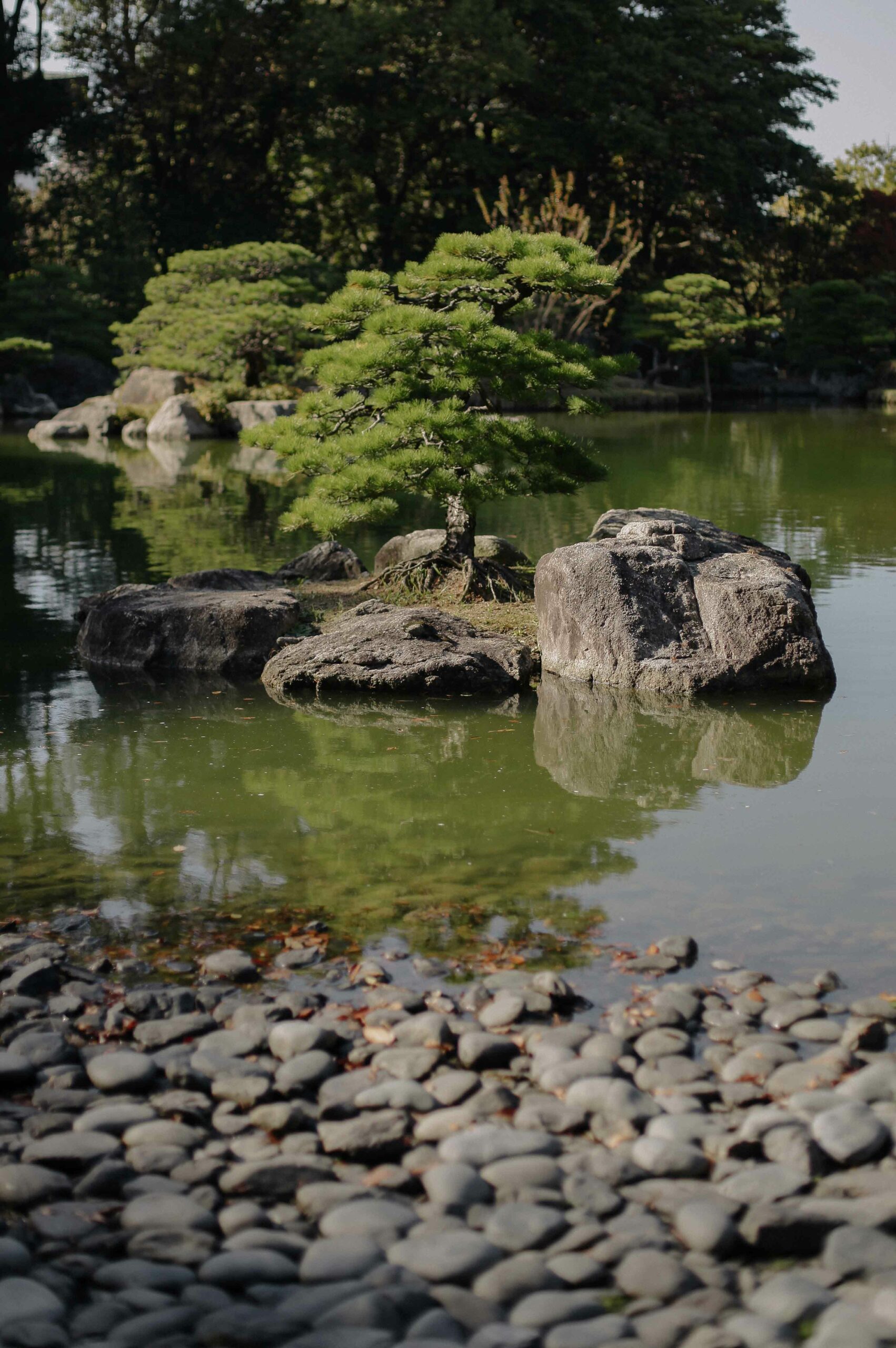
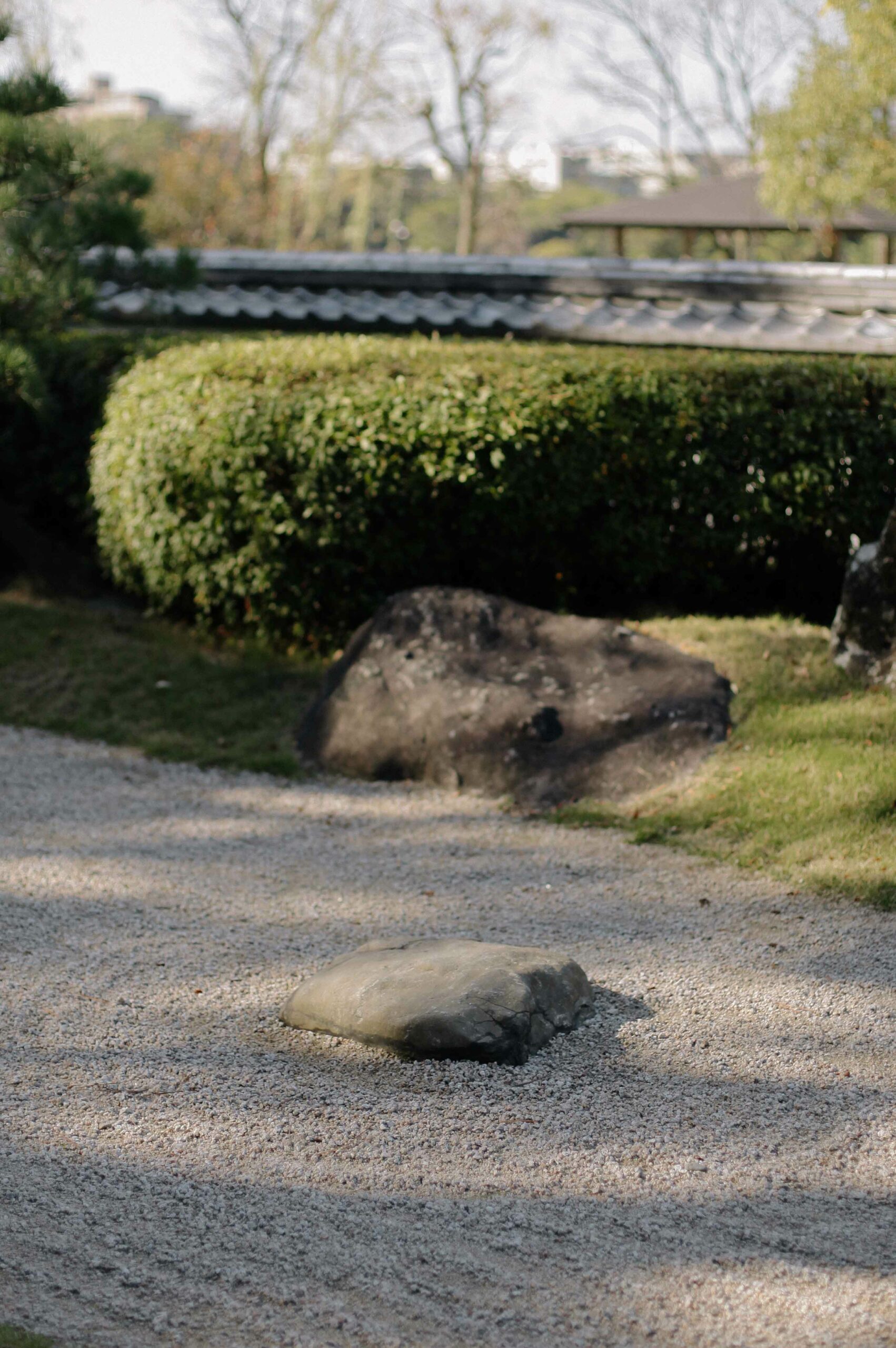
On entering the garden, you have the opportunity to follow a stony stream to the right for views of Fukuoka city, or to meander left towards the garden’s tea house and beautifully crafted pond and waterfalls. The tea house is, in fact, three tea-spaces in one: a rustic ‘sо̄an’ style hut, a relaxed ‘ryūrei’ style room with higher, western-style seating, and an even larger ‘sukiya-zukuri’ style room (something that most visitors would recognise as a ‘classic’ style of tea house).
Although the garden’s tea houses are available only by advance booking for private parties, one can experience them for a much cheaper rate on the 1st, 3rd and 4th Tuesday of each month. During these times, all booking fees and requirements are waived, except for an ¥800 fee for matcha green tea and traditional Japanese sweets. If you’re visiting the area on one of these ‘open Tuesdays’, it’s worth arriving at the Japanese garden as close as possible to its opening time, in order to secure a limited spot to visit the tea houses.

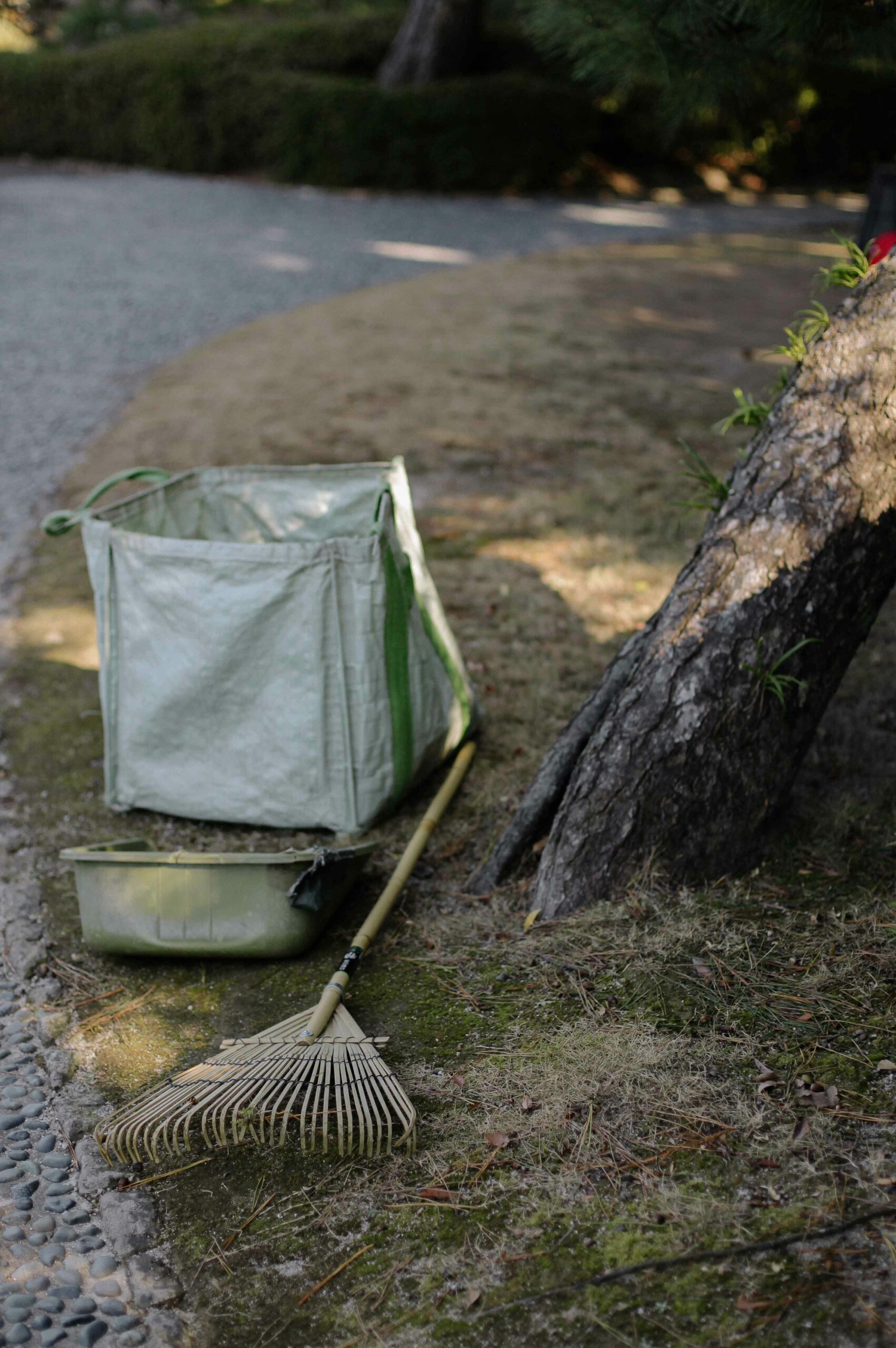
Walking through Ōhori Park’s Japanese garden creates a sense of being on a journey; a kind of mythical sojourn through a legendary landscape made miniature. Two waterfalls cascade over meticulously structured rocks, passing under rough-hewn stone bridges before settling into a mirror-like stillness. As the water calms, flashes of gold and pearl glint under the surface; koi carp drift unhurriedly though their own submerged world. A ‘beach’ of flat, smooth stones leads towards a rocky island with a single miniature pine planted atop a fine layer of moss. Here, the trees’ growth has been restricted, imitating the natural miniaturisation of plants that occurs at high altitudes, further adding to the sense of being atop a mountain.
Following the flow of the water leads to arcing Japanese maples, which turn from summer’s lime green to a deep crimson in late November. For all its carefully sculpted perfection, glimpses of the human make an appearance here and there; a sense of light shining through a gap in the curtains. Ladders, rakes, bamboo tools leaned or stashed in corners – all a reminder that the exquisite is born from the mundane.
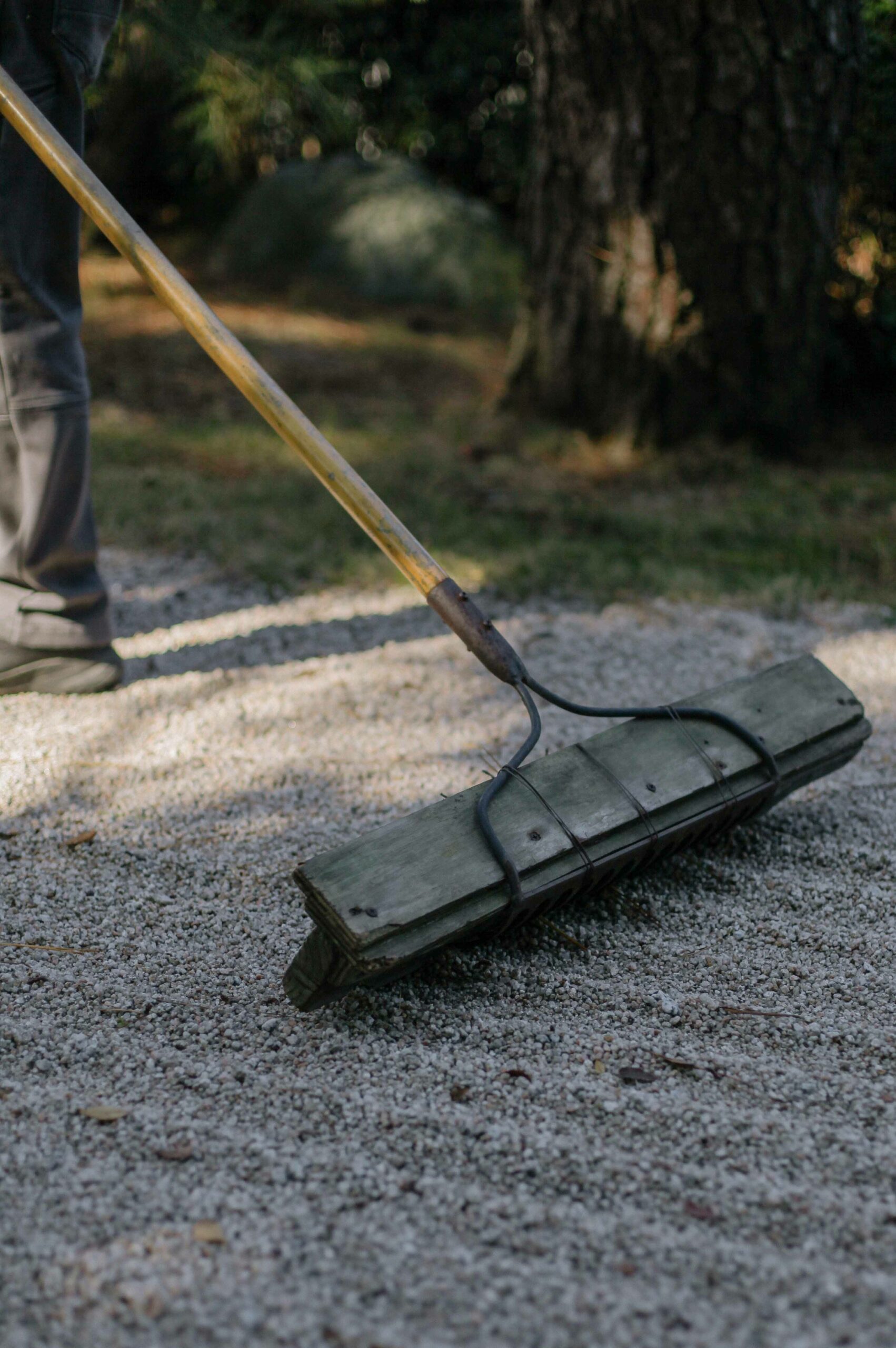
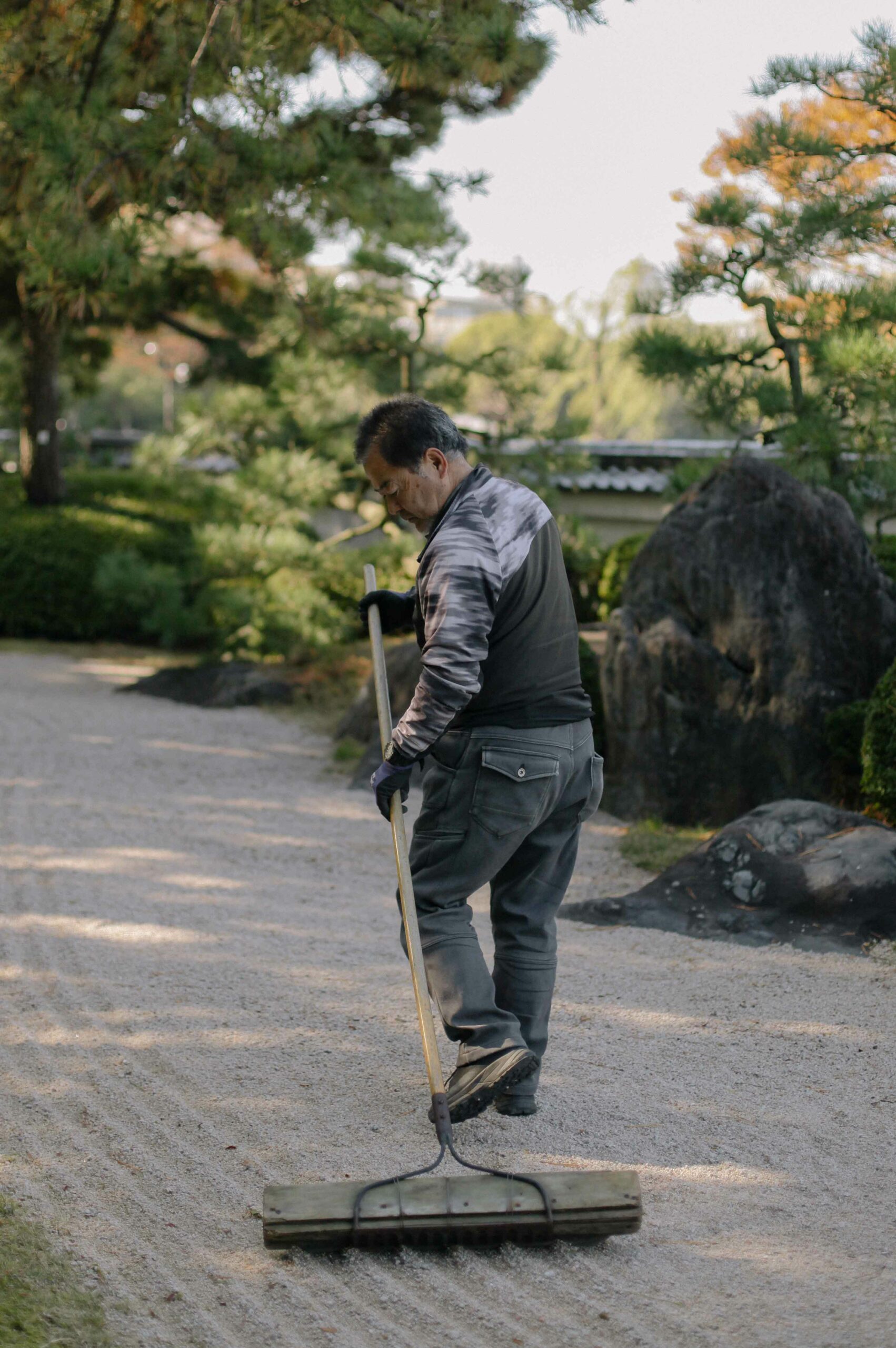
The final stretch of the garden is saved for the kare-sansui (dry-stone) garden. The white gravel evokes a flowing river, signalling the outer boundary of the garden. Overlooked by meticulously shaped ornamental black pine and carefully positioned natural boulders, the design evokes the image of a ravine; a slightly wild place. Taller trees grow here; red pine with ruffled bark and the occasional bagworm dangling from an invisible thread. Beyond the boundary wall is the Fukuoka skyline; a reminder that the ordinary still exists on the other side.
If you’re lucky, you may be wandering by as the garden staff rake the gravel river into shape; a task repeated every few days. Unlike the Zen gardens of Kyoto’s temples, which are raked in meditative discipline, Ōhori Park’s garden is maintained first and foremost for looks. Whether an act of formal meditation or not, the shaping of this flowing space is undeniably a calming act, even for those observing.
Ōhori Park itself is always moving, filled with children at play, sports teams in training and the laboured thudding of distance runners on their eternal circuits. The Japanese garden, though, is an oasis. For maximum tranquility, you may prefer to visit first thing in the morning, before heading to the Fukuoka Museum of Art.
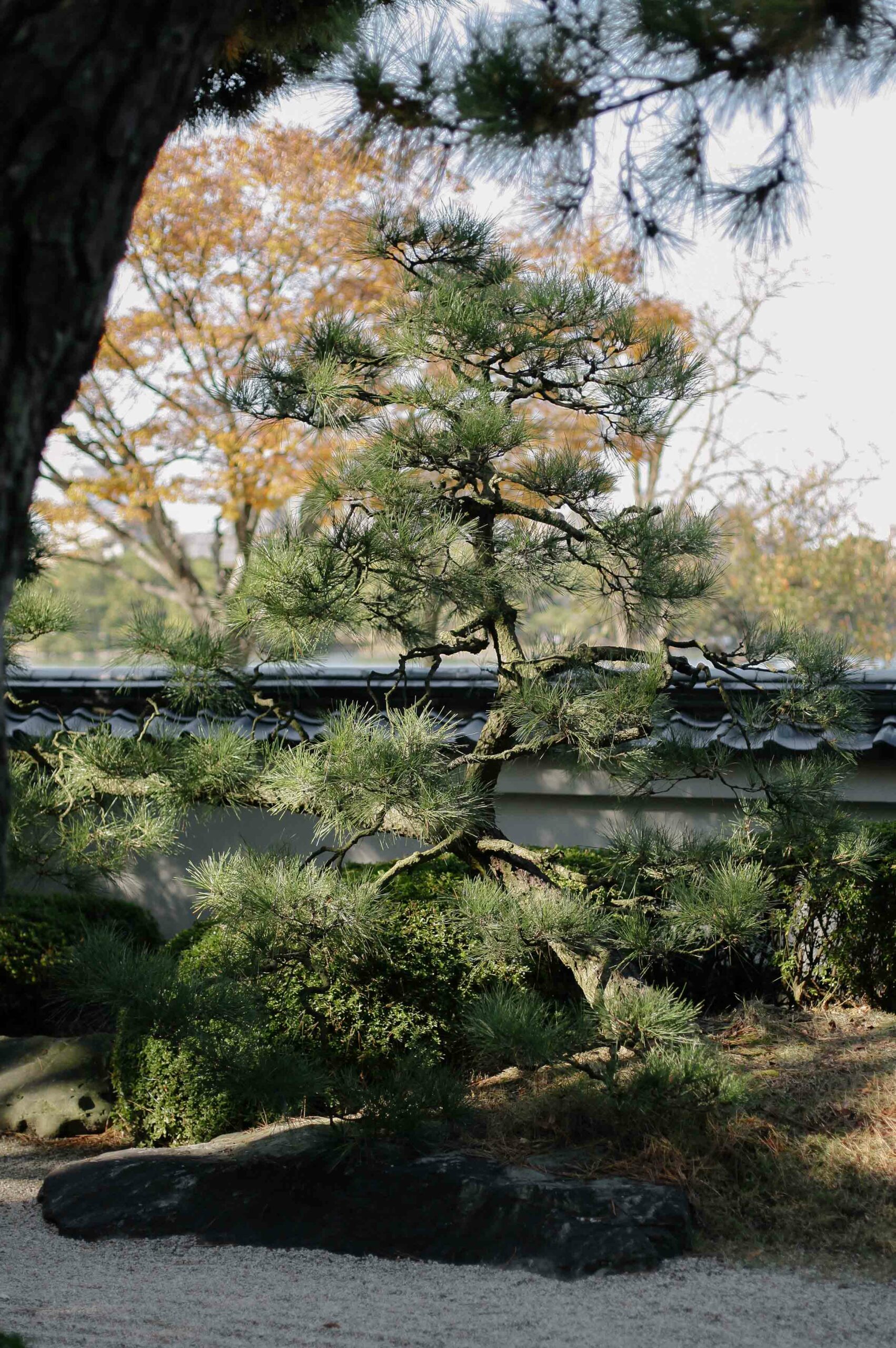
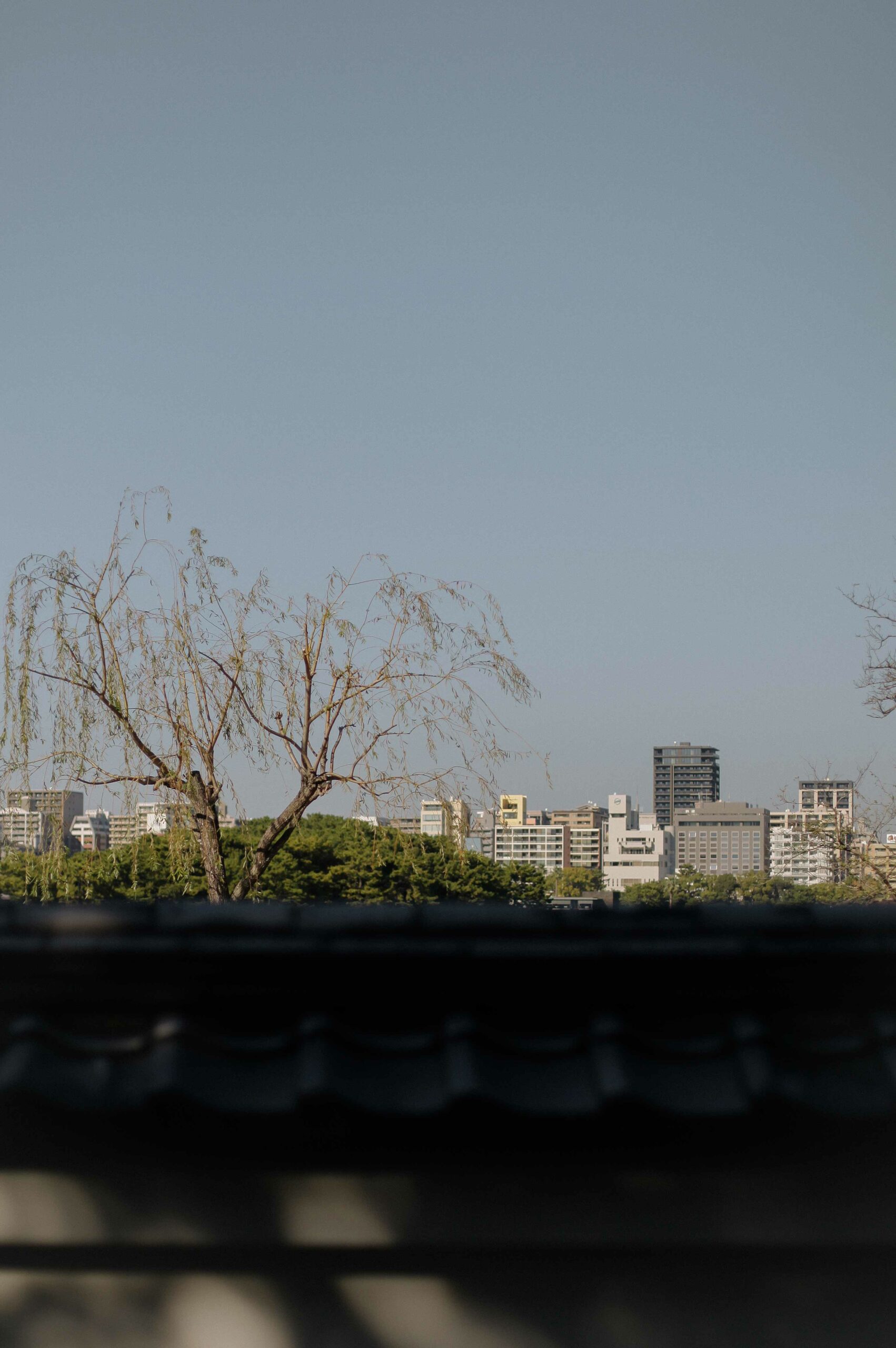
Access:
The nearest train station to the Japanese garden is Ōhori Park, on the Fukuoka Kūkо̄ (airport) line. From here, walk through Ōhori Park itself, following signs for the museum and gardens, as per this route.
Name: Ōhori Park Japanese Garden
Address: 1-7 Ōhorikoen, Chuo Ward, Fukuoka, 810-0051, Japan
Open: May – September: 9:00am – 6:00pm (last entry is at 5:45pm).
October – April: 9:00am – 5:00pm (last entry is at 4:45pm).
Closed every Monday.
Admission: ¥250 for adults (aged 15 or older)
¥120 children (under 15).
Website: https://www.ohoriteien.jp/en/
Post by Japan Journeys.



